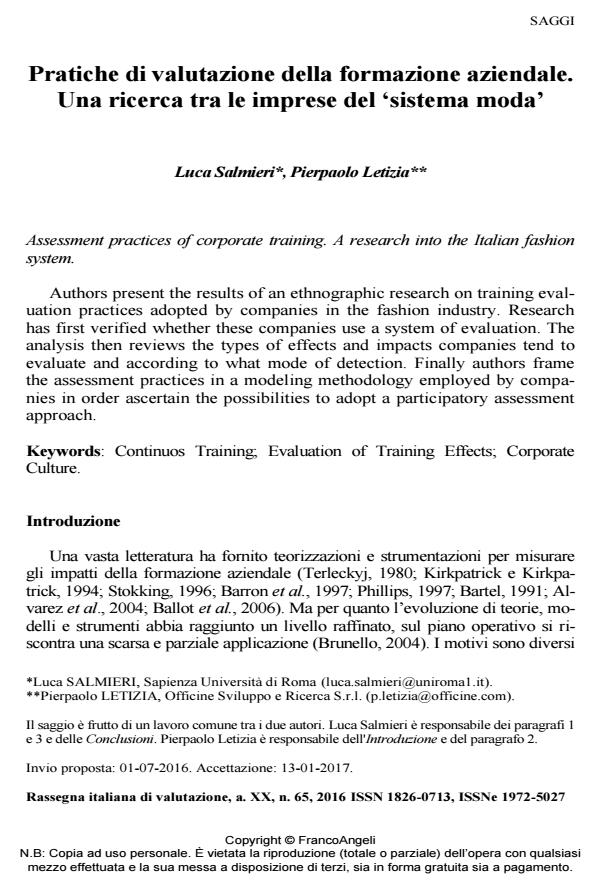Pratiche di valutazione della formazione aziendale. Una ricerca tra le imprese del ‘sistema moda’
Titolo Rivista RIV Rassegna Italiana di Valutazione
Autori/Curatori Luca Salmieri, Pierpaolo Letizia
Anno di pubblicazione 2017 Fascicolo 2016/65
Lingua Italiano Numero pagine 19 P. 101-119 Dimensione file 1184 KB
DOI 10.3280/RIV2016-065007
Il DOI è il codice a barre della proprietà intellettuale: per saperne di più
clicca qui
Qui sotto puoi vedere in anteprima la prima pagina di questo articolo.
Se questo articolo ti interessa, lo puoi acquistare (e scaricare in formato pdf) seguendo le facili indicazioni per acquistare il download credit. Acquista Download Credits per scaricare questo Articolo in formato PDF

FrancoAngeli è membro della Publishers International Linking Association, Inc (PILA)associazione indipendente e non profit per facilitare (attraverso i servizi tecnologici implementati da CrossRef.org) l’accesso degli studiosi ai contenuti digitali nelle pubblicazioni professionali e scientifiche
Authors present the results of an ethnographic research on training evaluation practices adopted by companies in the fashion industry. Research has first verified whether these companies use a system of evaluation. The analysis then reviews the types of effects and impacts companies tend to evaluate and according to what mode of detection. Finally authors frame the assessment practices in a modeling methodology employed by companies in order ascertain the possibilities to adopt a participatory assessment approach. .
Parole chiave:Continuos Training; Evaluation of Training Effects; Corporate Culture
- Beyond Bologna: The Sustainable University Enterprises Partnership Alessandro Figus, in INTERNATIONAL JOURNAL OF INNOVATION AND ECONOMIC DEVELOPMENT /2015 pp.37
DOI: 10.18775/ijied.1849-7551-7020.2015.23.2005
Luca Salmieri, Pierpaolo Letizia, Pratiche di valutazione della formazione aziendale. Una ricerca tra le imprese del ‘sistema moda’ in "RIV Rassegna Italiana di Valutazione" 65/2016, pp 101-119, DOI: 10.3280/RIV2016-065007